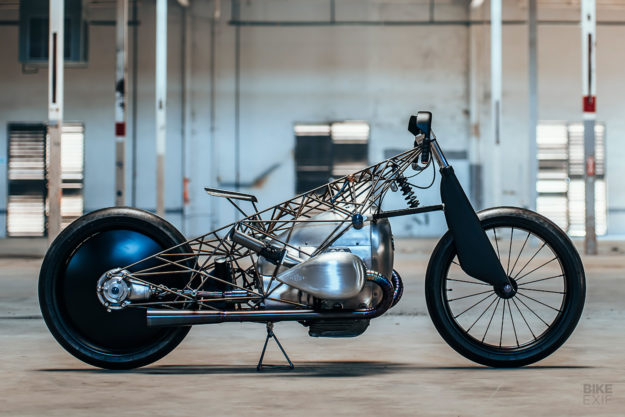
BMW Motorrad have something big in the works. All they’ve shown us so far is a boxer engine and a drivetrain…but they’ve teased these in the most spectacular fashion.
First, they commissioned a build from Custom Works Zon for the Mooneyes show in Yokohama. Now it’s the turn of the highly talented team at Revival Cycles in Austin, Texas. They’ve answered with what is possibly their hottest machine to date: ‘Birdcage.’

Revival shop boss, Alan Stulberg, picks up the story: “BMW came to us months ago and presented us with an engine, gearbox and rear differential drive that was never before seen.”
“They gave us very few details, but it’s obvious they have big plans for the iconic opposed twin engine. It’s difficult to fully take in and absorb in these photos, but this boxer engine is colossal.”
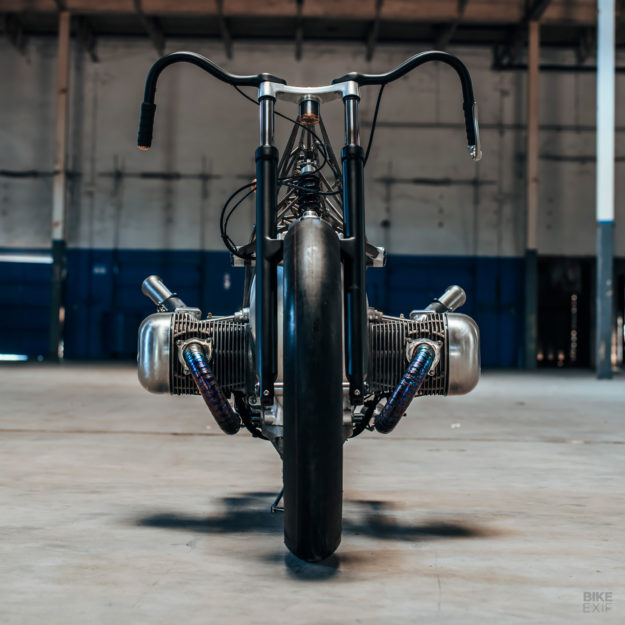
With huge cylinders (we’re guessing a total capacity of around 1,800 cc) jutting out on either side, Revival’s challenge was to design a ground-up custom that would carry that mass—and emphasize its shapely beauty.
Alan wanted the concept to accomplish two things: “To appear as if it would not function, and to have an unencumbered view of the engine and drivetrain. I believe we accomplished both goals handily.”
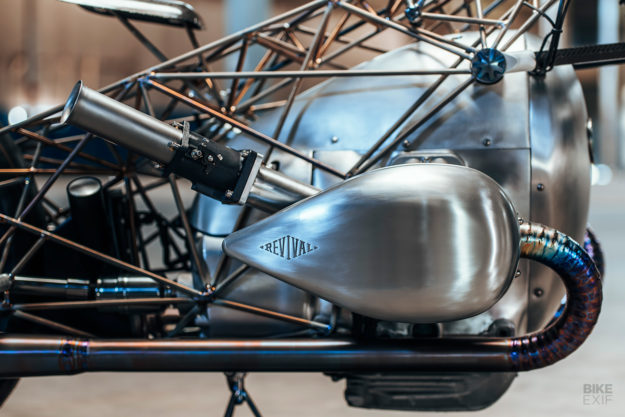
So how did Revival get from that ideal to this exquisite, wire-framed oddity? By drawing inspiration from an old infatuation: the birdcage-framed race cars that Maserati and Porsche famously built in the late 50s and early 60s.
They decided to go ‘full birdcage,’ and subsequently built the first birdcage-framed motorcycle we’ve ever seen.
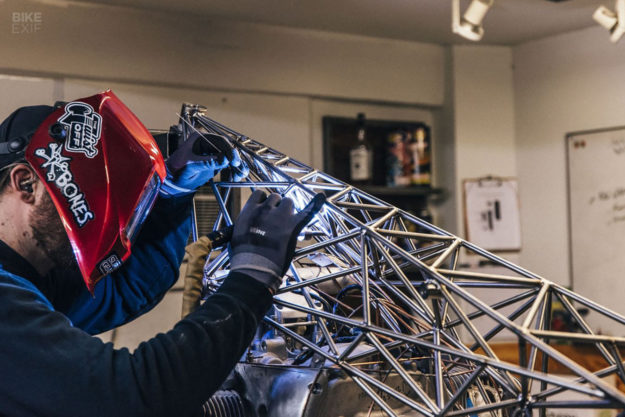
The Revival crew decided to work with titanium, picking it for its low weight and high strength. And as you’d imagine, crafting the framework took more than a minute. The main structure is made up of 138 carefully cut, coped and welded titanium frame members.
Every one of the motorcycle’s essential components attaches to this main ‘birdcage.’ And even though everything’s bolted in exactly where it needs to be, there’s a lot of free-form design going on too—thanks to the inherent asymmetry of BMW boxer engines.
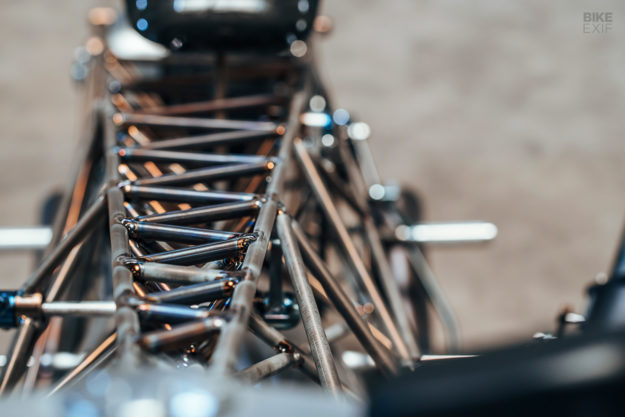
“The best part of a BMW riding experience is generally how well balanced it all feels,” says Alan. “So it is more than ironic, as a builder, to look down upon the bare engine, gearbox and rear drive and see just how biased everything is towards asymmetry.”
“To design around that with harmonious shapes and lines was almost easy for me. There is only one single piece of titanium rod down the middle of the bike that is centered with the wheels—and the rest fell where they fit best, flowing all around the drivetrain.”
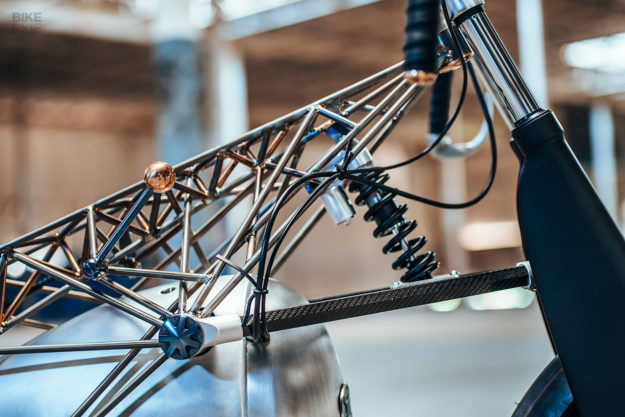
From there, Revival built a front suspension system in the same vein as BMW’s famous Telelever design. They designed the front end in CAD first—running simulations to make sure it would function well.
The fork lowers were lifted from a BMW R 1150 GS, and the shock is an Öhlins mountain bike unit. The rest of the setup is a mix of CNC-machine aluminum parts, and hexagonal carbon fiber tubing.
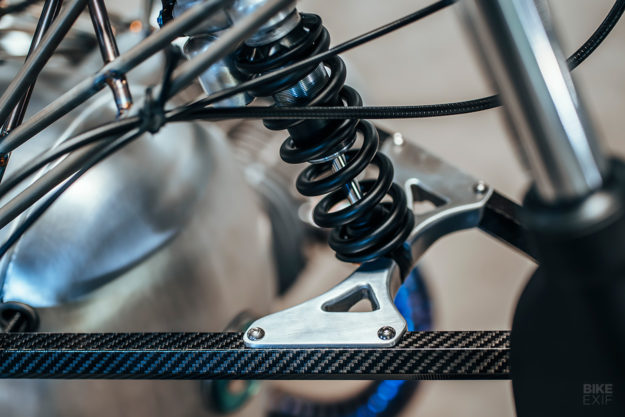
“It all feels like pure magic when you hold the components in your hand,” says Alan, “and it’s hard to fathom their strength to weight balance.”
The forks—and handlebars—were shaped to pay homage to another Revival favorite: the iconic Ernst Henne BMW Landspeeder. The controls are especially unique—both the throttle and classic inverted clutch are routed internally, and there’s a hand shifter mounted to the right of the frame, with a carbon fiber linkage.
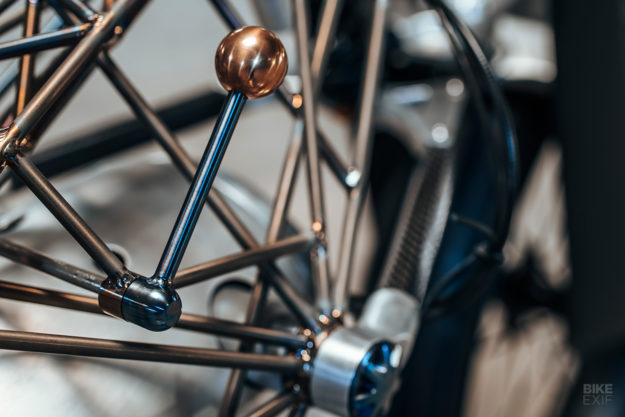
Tricky engineering and enviable materials are all over this boxer-powered machine. Revival’s lead engineer and fabricator, Chris Auerbach, went to town on the details.
He built the huge aero-shaped valve covers, a carbon fiber seat, titanium fasteners for the axles, foot controls and a whole bunch of other pieces.
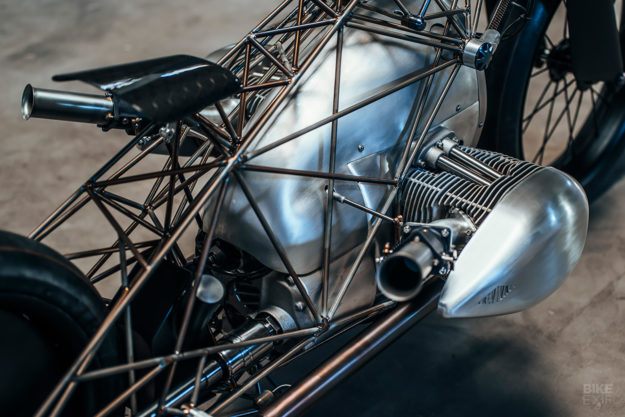
As a design exercise, Alan designed an aluminum cover for the engine and gearbox that would visually round off the drivetrain. But it also became the perfect spot to stash the custom ECU, charging and ignition systems, and most of the wiring.
Just behind it, and a bit lower down, is an aluminum fuel tank. It holds just a gallon, and has its own internal electronic fuel pump.
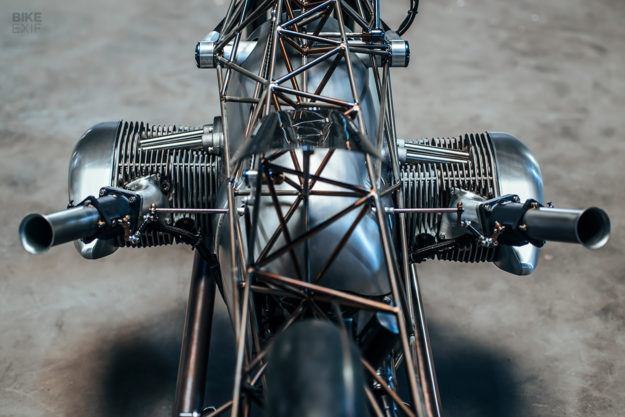
Revival went the old-school hotrod route for fueling, with large-mouth mechanical fuel injection bodies, and bell mouth velocity stacks. Those stacks look like they’re in the way, but they actually splay out just a bit wider than the valve covers.
“There’s ample room for the rider to tuck their knees in behind the cylinders,” says Alan, “for what we hope will be those top speed trials at Bonneville and the dry lake beds of California.”
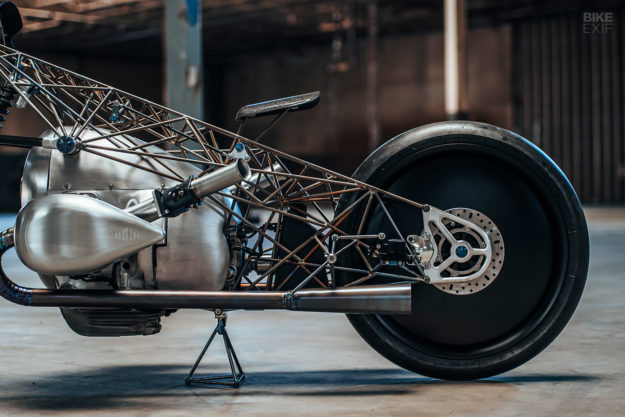
With a 70” wheelbase and 23” Dunlop slicks, this BMW should run pretty stable. There’s only one brake to stop it though—a custom disc setup out back, operated on the left foot control. As an extra nod to the Henne racer, the rear wheel’s covered by aluminum discs.
Chief welder, Ty Burham, put together a full titanium exhaust system, that was anodized for a more unique finish.
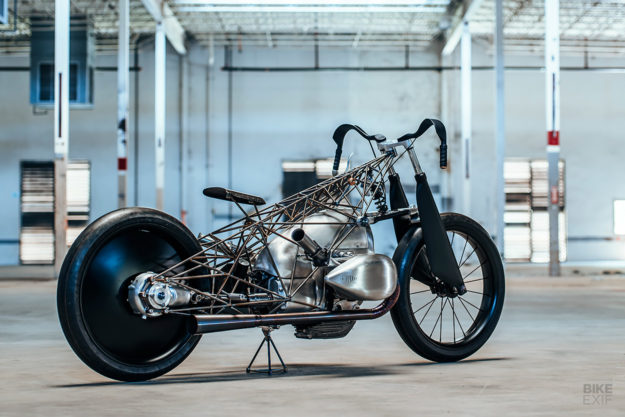
Birdcage is a remarkable blend of art and engineering; a truly out-the-box build that showcases the Revival team’s vast pool of talent. And if you’d like to see it in the flesh, just head down to the Handbuilt Show in Austin this weekend—it’s there right now, turning heads and dropping jaws.
Alan would like to thank his entire team for their stunning performance: (in order) Chris Auerbach, Ty Burham, Chris Davis, Alec Padron, Ian Holt, Andy James and Josh Gage.
Revival Cycles | Facebook | Instagram
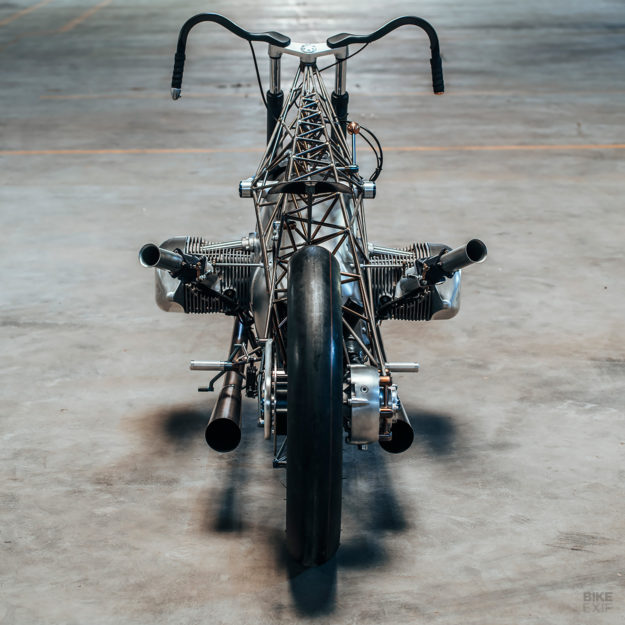
UPDATE April 3, 2020: The BMW R18 cruiser has now launched.